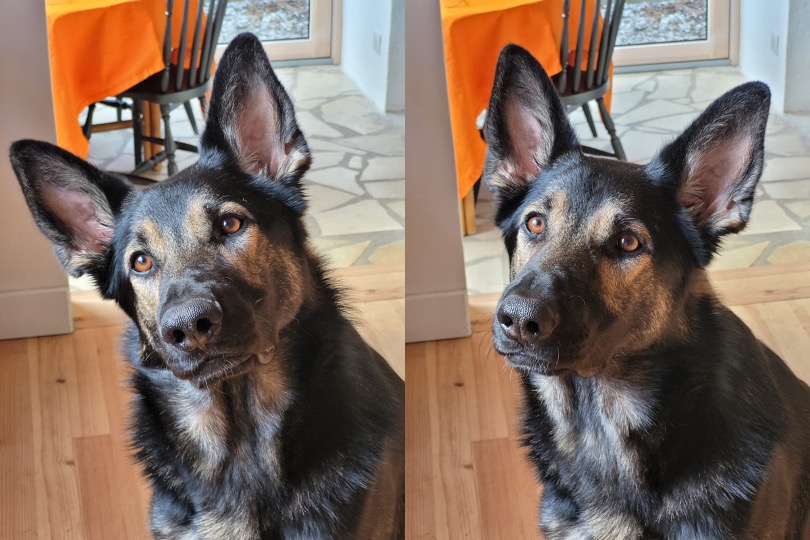This post is also available in Dutch.
Dogs can read (human) faces like we do
Many research studies investigated whether humans and dogs shared the same attentional biases when looking at faces compared to non-face stimuli, be it the face of a human or dog. For example, humans have this strange preference of looking mainly at the right side of a face, so a bias to the left from the viewpoint of the person looking. Dogs don’t show this behavior with other dogs, and they do not show the strong preference for faces humans have. However, they surprisingly express the leftwards bias when looking at human faces. As if they had learnt how to read a human face the way we do. A more recent study investigated how dogs reacted to positive versus negative facial expressions when combined to either a congruent vocal expression (e.g., happy face x happy voice) or an incongruent one (sad face x happy voice). Interestingly, dogs showed a preference for any face/voice association which emotion was congruent, no matter positive or negative.
Oxytocin reveals a special dog-owner bond
Oxytocin is a hormone synthetized in the brain by the hypothalamus, and it plays many roles including social bonding and mother-infant attachment. Usually, the effect of oxytocin is observed within-species, but a study showed that eye-contact enables both the owner and the dog to produce higher oxytocin levels. They collected urine from the dog and its owner before and 30 minutes after a period of intensive mutual gazing. They repeated the experiment with a session of “owner touching his dog” and “owner talking to his dog.” They showed that the elevation in concentration of oxytocin almost doubled after the eye-contact activity compared to the other two social activities.
Finally, researchers showed that this result was not confirmed in a wolf-owner relationship, wolf belonging to the same species as dogs, indicating that the bond between dogs and humans is special and might have emerged during domestication.
Dogs’ brains show they are good listeners
Dogs have this incredible capacity to partially understand a language that they don’t speak: ours. Research projects have studied neural mechanisms underlying human speech processing in dogs. They found that lexical processing, i.e., the vocabulary that you use, was resolved in the left side of the brain’s auditory system, while the intonation particularly involved the right one. In parallel, one of the main areas involved in reward processing was activated only when both the words used and the way they were said, i.e., the intonation, were associated with praise. A neutral intonation of a kind word or a neutral word said kindly yielded no such effect. This means dogs can integrate different sources of information to process emotions in speech.
A researcher one day said to me: “if another animal was to speak our language, it would be a dog.” I’ve always liked this idea, but I didn’t have the evidence until yesterday, when I discovered this research article showing how dogs tend to segment speech (i.e., cutting the continuous stream into words) the same way humans do…
Kim Beneyton
Floortje Bouwkamp
Marisha Manahova
Ellen Lommerse
Felix Klaassen

Awesome article! Dogs are truly a man’s best friends! Amazingly smart, beautiful and caring creatures, a gift from God!